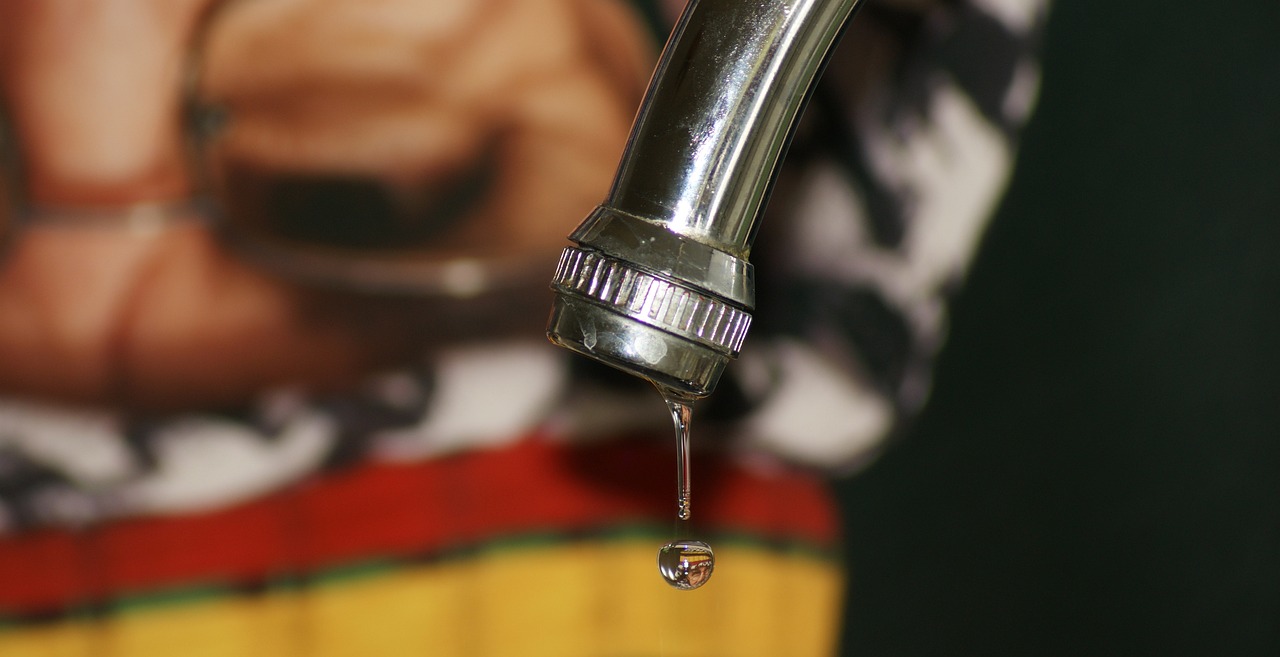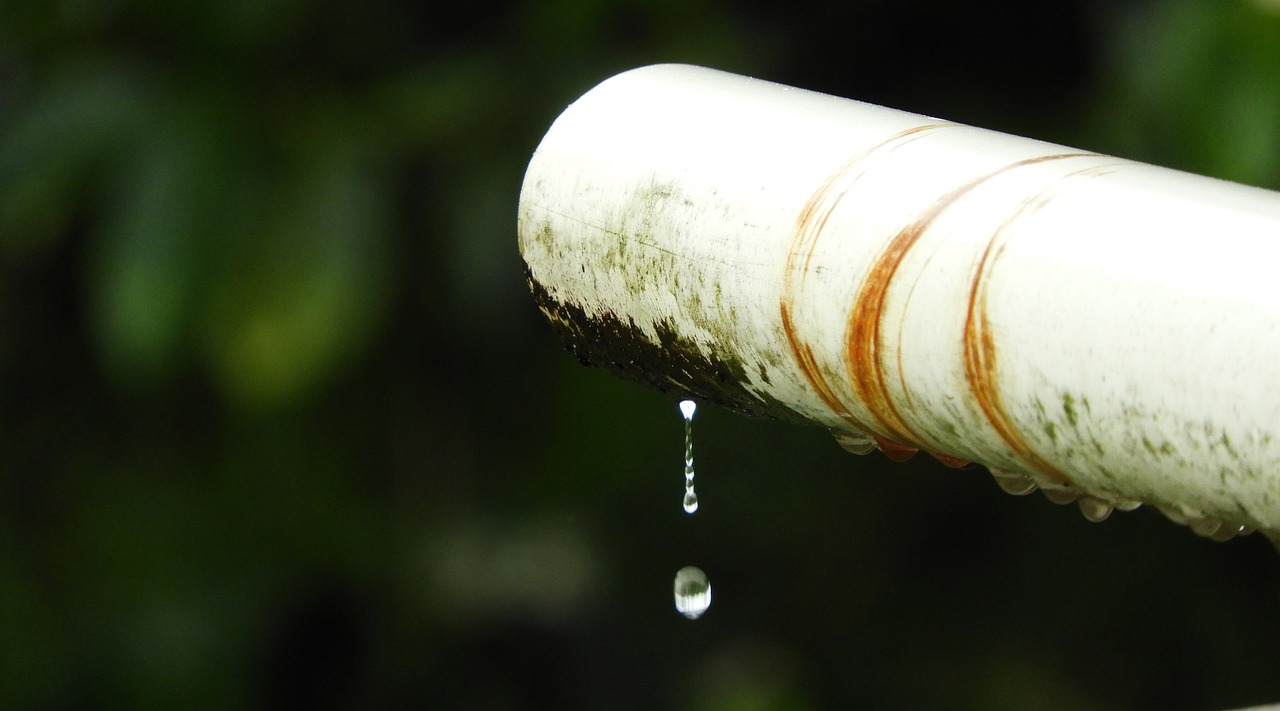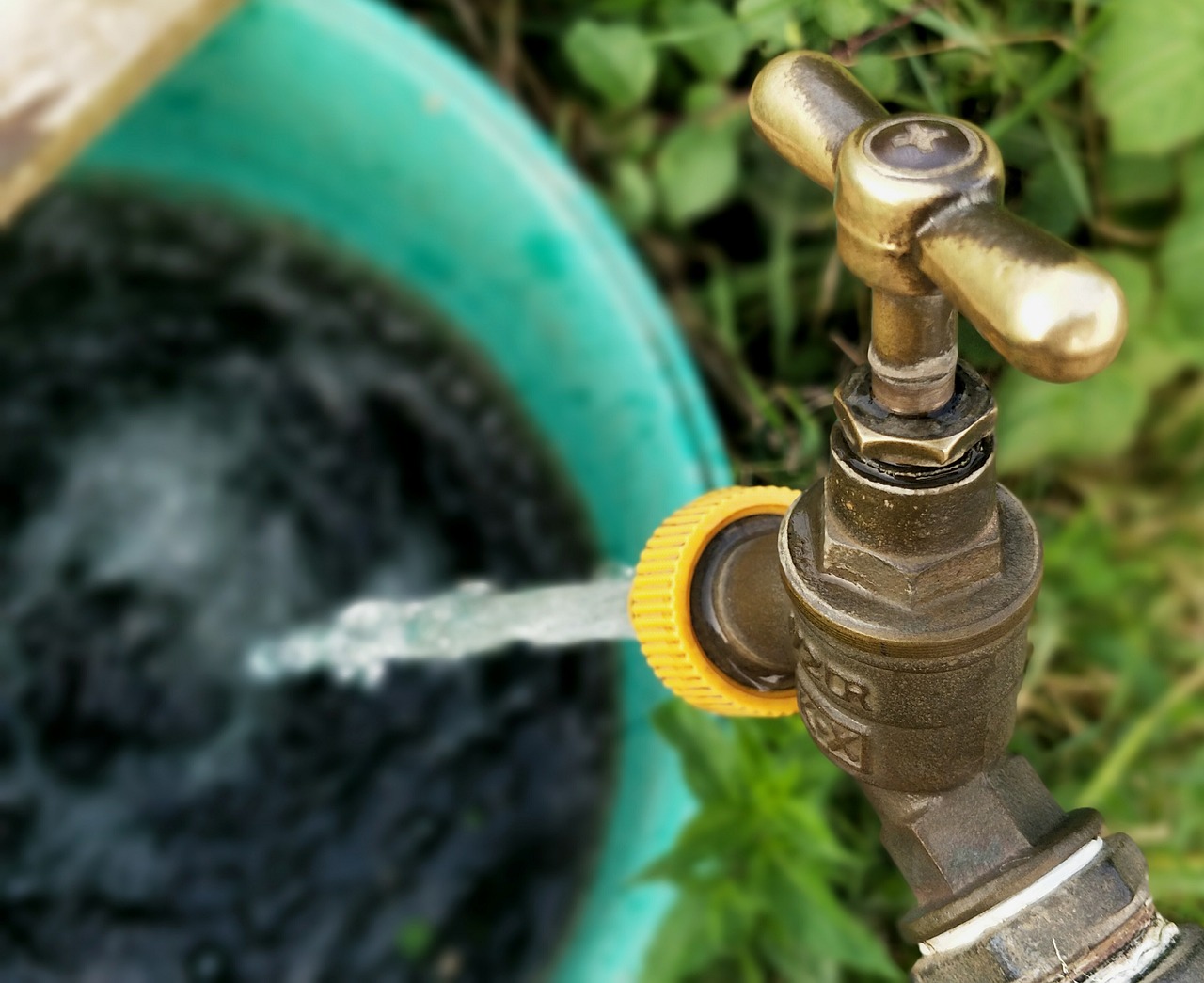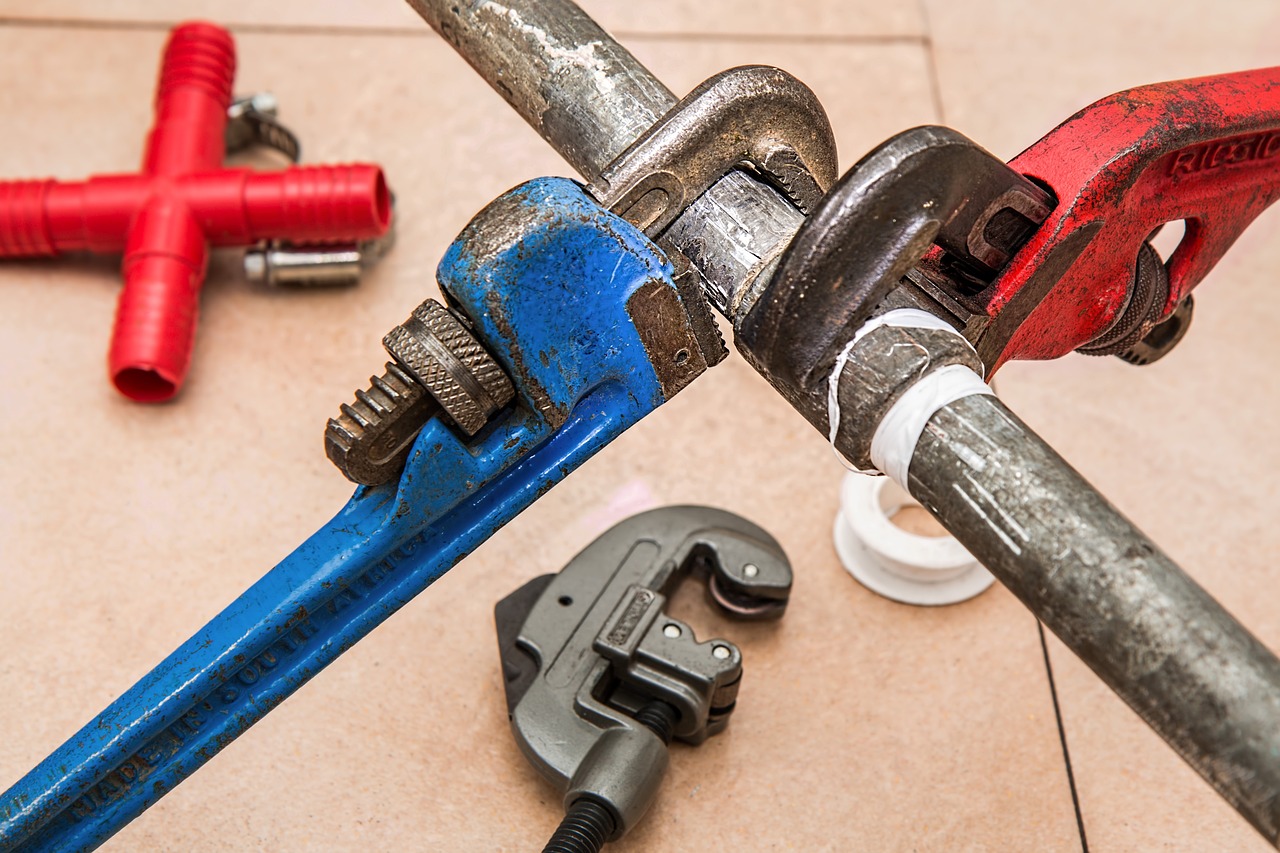Detecting water leaks in your home is crucial to preventing extensive damage and costly repairs. Early detection can save you a significant amount of time, money, and stress. In this comprehensive how-to guide, we delve into the best methods to detect hidden water leaks and offer practical advice on how to find water leaks in a house. Whether you suspect a leak due to suddenly high water bills or damp spots, or you’re just taking preventive measures, this guide covers it all. From manual inspection techniques to modern smart home technology, we will explore the best water leak detection tools and methods available. Get ready to safeguard your home as we reveal the most effective strategies for detecting water leaks before they spiral out of control.
Understanding the Importance of Detecting Water Leaks Early
Water leaks, whether minor or significant, can wreak havoc on a home if left unattended. Understanding the importance of addressing these issues promptly can save homeowners from costly repairs and severe structural damages. Here, we will delve into why how to find water leaks in a house early is crucial.
Preventing Structural Damage
Water leaks can lead to severe structural issues if neglected. Persistent water exposure can weaken the foundation, walls, and flooring of your home. Over time, this can compromise the integrity of your property, leading to costly repairs.
Health Implications
Undetected water leaks foster mold growth, which can pose serious health risks. Methods to detect hidden water leaks help in identifying moisture-prone areas where mold can flourish. Mold exposure can cause respiratory problems, allergies, and other health issues, making early detection vital for a healthy living environment.
Financial Savings
Early leak detection translates to significant savings. Water damage repairs, mold remediation, and increased water bills can quickly add up. By using the best water leak detection tools, homeowners can mitigate potential damages and keep expenses under control.
Environmental Responsibility
Water is a precious resource, and wasting it through leaks is detrimental to the environment. Being proactive in identifying and fixing leaks conserves water, contributing to a more sustainable and eco-friendly lifestyle.
Key Points Summary
| Advantages | Description |
|---|---|
| Prevent Structural Damage | Protects the home’s foundation, walls, and floors |
| Health Benefits | Prevents mold growth and reduces health risks |
| Financial Savings | Reduces repair costs and water bills |
| Environmental Impact | Contributes to water conservation and sustainability |
Conclusion
Understanding the importance of detecting water leaks early cannot be overstated. By integrating efficient techniques and tools to find water leaks, homeowners can safeguard their property, health, finances, and the environment. Always stay vigilant and proactive about maintaining the integrity of your home by catching leaks before they turn into major problems.

Image by TRAPHITHO from Pixabay
Signs You Have a Water Leak in Your Home
Knowing the signs you have a water leak in your home is crucial for early detection and can save you from extensive damage. Here are some essential indicators that signify the presence of a leak:
Unexplained Increase in Water Bills
If you notice a sudden spike in your water bills without increased usage, it could be due to a hidden leak. Monitor your bills closely to catch any abrupt changes.
Visible Mold and Mildew
Mold and mildew thrive in moist environments. If you spot these fungi in places not typically damp, like ceilings or walls, it might be due to a concealed water leak.
Stains and Discoloration
Water stains usually appear on walls, ceilings, or floors. These stains can be yellowish or brownish and signify that water is seeping into areas where it shouldn’t be.
Musty Odors
A persistent musty smell often indicates trapped moisture, which could result from a leak. This odor is typically a sign of stagnant water and possible mold growth.
Sound of Running Water
Hearing water running when all fixtures are turned off is a strong indicator of a hidden leak. Listen keenly during quiet times to detect any suspicious sounds.
Low Water Pressure
A significant drop in water pressure throughout the house might mean there’s a leak affecting your plumbing system.
Using Tools for Verification
In addition to these signs, utilizing various methods to detect hidden water leaks can help verify the presence of a leak. Here’s how you can combine them for effective identification:
| Tool/Method | How to Use | Effectiveness |
|---|---|---|
| Water Meter | Check the reading when water is not in use | High for visible leaks |
| Infrared Cameras | Scan areas for temperature changes | Excellent for hidden leaks |
| Acoustic Sensors | Listen for leak sounds | Good for underground or wall leaks |
| Moisture Sensors | Detect moisture levels | Ideal for damp areas |
By paying attention to these signs you have a water leak in your home and employing the best water leak detection tools, you can prevent severe damage and costly repairs. Recognizing these symptoms early is the first step towards effective management of water leaks.
Common Areas Where Water Leaks Occur
Understanding how to find water leaks in a house begins with knowing the most common places where they might occur. Identifying these areas can save you significant time, money, and hassle.
Kitchen and Bathrooms
- Under the Sink: One of the most prone areas for leaks. Check for dampness or pooling water under kitchen and bathroom sinks.
- Around Faucets: Slow drips or pooling water around faucet bases can be a red flag.
- Toilets: Common signs include water on the floor around the base or hearing the toilet running long after flushing.
Appliances
- Washing Machines: Inspect hoses and fittings for drips or wet spots.
- Dishwashers: Water under or around your dishwasher can indicate a hidden leak.
- Refrigerators: Pay special attention to the area around the ice maker and water dispenser.
Utility Areas
- Water Heaters: Leaks often form around the base of the unit. Look for rust or moisture.
- Basements and Crawl Spaces: These areas may have hidden leaks not immediately visible. Using methods to detect hidden water leaks like moisture sensors can be particularly effective here.
Plumbing Lines
- Behind Walls: Unseen leaks in pipes leading to or within walls can cause significant structural damage. Infrared cameras are one of the best water leak detection tools for such instances.
- Ceilings: Water stains on ceilings indicate a potential leak from above.
Outdoor Areas
- Garden Hoses and Sprinkler Systems: Check connections and lines for leaks.
- Exterior Faucets: Dripping faucets and pooling water around the spout can be a sign of leakage.
Comparison of Common Areas
| Area | Method to Detect | Tools Required |
|---|---|---|
| Under Sinks | Visual inspection, touch | Flashlight, towels |
| Around Faucets | Visual, auditory (drips) | Flashlight, simple repair tools |
| Toilets | Visual, auditory | Dye test kits, wrench |
| Washing Machines | Visual, tactile | Flashlight |
| Dishwashers | Visual, auditory, moisture sensors | Flashlight, moisture meter |
| Refrigerators | Visual, tactile | Flashlight |
| Water Heaters | Visual, moisture sensors | Flashlight, moisture meter |
| Basements/Crawl Spaces | Visual, moisture sensors, infrared cameras | Infrared camera, moisture meter |
| Plumbing Pipes | Visual, moisture sensors, infrared cameras | Infrared camera, moisture meter |
| Garden Hoses/Sprinklers | Visual, tactile | Flashlight, simple repair tools |
| Exterior Faucets | Visual, auditory | Flashlight, simple repair tools |
In summary, being aware of these common areas and leveraging the appropriate detection methods and tools can significantly help in finding leaks before they cause major issues. Make inspection a routine to safeguard your home efficiently.
Visual Inspection Techniques to Spot Water Leaks
Visual inspection is a fundamental step in identifying potential water leakage problems in your home. Implementing these methods to detect hidden water leaks correctly can save you significant time and expense. Here, we outline highly effective visual inspection techniques that will help you spot leaks before they become catastrophic issues.
Key Areas to Check
- Walls and Ceilings: Discoloration, peeling paint, or water stains are typical indicators of water leaks.
- Floors: Look for warped or buckling wood floors and damp carpeting.
- Bathrooms: Inspect around toilets, sinks, and bathtubs for any signs of water seepage.
- Kitchens: Check under sinks, behind dishwashers, and around refrigerator water lines.
Step-by-Step Visual Inspection
- Examine the Plumbing Fixtures: Start by looking at visible plumbing, such as under sinks and around tubs. If you notice any rust or corrosion, it might indicate a leak.
- Check Appliances: Inspect washing machines, dishwashers, and water heaters for any signs of water puddles or dripping water.
- Inspect Exterior Walls: Sometimes water leaks can originate outside. Look around hose bibs, and exterior walls for any noticeable dampness or mold.
- Ceiling and Attic Check: Pay attention to the attic and ceilings. Wet spots might suggest a roof or pipe leak above.
Benefits of Visual Inspections
Visual inspections offer several advantages, including:
| Advantages | Description |
|---|---|
| Low Cost | No need for expensive equipment or professional services |
| Quick | Immediate results can be obtained |
| Accessibility | Anyone can perform it with basic knowledge |
Remember, always ensure you perform these inspections regularly. The ability to find water leaks in a house using these simple yet effective techniques can greatly reduce future damage and repair costs.
For more accuracy, complement these methods with the best water leak detection tools to enhance your home’s safety and efficiency.

Image by TRAPHITHO from Pixabay
Using Your Water Meter to Detect Leaks
To protect your home from the costly damages of water leaks, leveraging your water meter is an effective and straightforward approach. This method will help you determine if there’s an unnoticed leak in your property. Here are the steps to use your water meter as a detection tool:
Steps to Check for Leaks Using a Water Meter
-
Locate Your Water Meter: Your water meter is typically found along your property line or where the water supply line enters your home.
-
Turn Off All Water Fixtures: Make sure all faucets, showers, and appliances using water are turned off. Inform everyone in the household to refrain from using water during this time.
-
Read the Water Meter: Observe and record the current reading on your water meter, including both the digits and the position of the dial or sweep hand.
-
Wait and Monitor: Leave your water off for a period of at least 30 minutes to 1 hour. Avoid using any water during this inspection period.
-
Recheck the Meter: After waiting, check the water meter again. If the reading has changed, this could indicate a leak in your household.
Best Water Leak Detection Tools Comparison
To further enhance your water leak detection efforts, you can also use some advanced tools. Here’s a comparison of a few popular choices:
| Tool | Description | Pros | Cons |
|---|---|---|---|
| Infrared Cameras | Thermal imaging to locate hidden water leaks in walls | Highly accurate; non-invasive | Expensive; requires some expertise |
| Acoustic Sensors | Sound-based detection to pinpoint leaks in pipes | Effective for underground or concealed leaks | Limited effectiveness in noisy environments |
| Moisture Sensors | Detects moisture levels in walls, ceilings, and floors | Easy to use; immediate results | May miss small or slow leaks |
Combining the methods to detect hidden water leaks with best water leak detection tools ensures you quickly identify and address any hidden water issues.
Tips for Effective Water Meter Use
- Regular Monitoring: Check your water meter monthly for unexpected changes.
- Keep Detailed Records: Maintain a log of your water meter readings and consumption patterns.
- Consult Professionals: If you consistently notice unusual water usage and cannot identify leaks, consider hiring professional leak detection services.
In conclusion, understanding how to find water leaks in a house using your water meter is not only simple but a proactive step towards maintaining your home’s integrity. By combining this method with modern detection tools, you can effectively manage and prevent potential water damage.
How to Find Hidden Water Leaks with Infrared Cameras
When it comes to how to find water leaks in a house, infrared cameras serve as an exceptional tool. These devices can identify moisture hidden behind walls, under floors, and even inside ceilings without requiring invasive measures. Understanding the techniques and methods to detect hidden water leaks using infrared technology can save you time and potentially significant financial costs.
How Infrared Cameras Work
Infrared cameras detect thermal differences, meaning they can visualize changes in temperature. This is extremely useful because water leaks often cause cooler areas which can then be flagged:
- Temperature differences: Leaks result in moist areas, causing a change in temperature detectable by infrared cameras.
- Non-invasive: Unlike traditional methods like cutting through walls or floors, infrared cameras allow you to assess the situation without causing damage.
Steps to Using Infrared Cameras
-
Prepare the Space:
- Ensure the area is dry to easily spot moisture contrasts.
- Turn off any heating or cooling devices to avoid false readings.
-
Operate the Camera:
- Point it at suspect areas like ceilings, walls, or floors.
- Move the camera slowly to accurately capture thermal images.
- Observe color variations; cooler shades generally indicate moisture.
-
Analyze the Data:
- Use the camera’s software or built-in features to examine the thermal images.
- Look for areas with significant temperature deviations.
Benefits of Using Infrared Cameras
| Feature | Benefit |
|---|---|
| Non-invasive | No need for dismantling structures. |
| Quick and Efficient | Rapid identification of leak locations. |
| Cost-effectiveness | Limits repair costs by targeting specific areas. |
Best Practices for Effective Use
- Regularly inspect high-risk areas such as bathrooms, kitchens, and basements.
- Periodically compare thermal images over time to catch slow-developing leaks.
Finally, remember that infrared cameras are among the best water leak detection tools available, but combining them with other methods such as moisture meters or professional services can provide comprehensive diagnostics. Employing these techniques will ensure that you promptly address any potential threats to your home, maintaining both its integrity and value.
Utilizing Acoustic Sensors for Leak Detection
When it comes to how to find water leaks in a house, one of the most advanced and effective methods is utilizing acoustic sensors for leak detection. These tools are specially designed to pick up the subtle sounds produced by water leaking through pipes. Learning how to employ these devices correctly can save you time and prevent costly damage.
Why Use Acoustic Sensors?
Acoustic sensors are advantageous due to their precision and efficiency. They are particularly useful for detecting leaks behind walls, under floors, or in large plumbing systems where visual inspection alone falls short. Here’s a quick overview of why acoustic sensors are effective:
- High Sensitivity: Can detect even minor leaks.
- Non-invasive: No need for destructive testing.
- Time-saving: Quickly narrows down leak locations.
How Acoustic Sensors Work
Acoustic sensors detect the unique sounds created by water escaping from pressurized pipes. By placing the sensors at various points along your plumbing system, you can pinpoint the leak’s exact location based on the intensity and frequency of the sounds.
Steps to Use Acoustic Sensors
- Identify Potential Leak Areas: Focus first on high-risk zones like kitchens, bathrooms, and basements.
- Prepare Your Equipment: Ensure the acoustic sensor is fully charged and calibrated.
- Listen for Leaks: Move the sensor along pipes, listening for the distinctive "hissing" or "gurgling" sounds indicative of a leak.
- Analyze Data: Modern acoustic sensors come with software to help translate sound frequencies into actionable data.
Key Points for Optimal Usage
| Best Practices | Details |
|---|---|
| Quiet Environment | Avoid using sensors during busy or noisy times of the day. |
| Regular Calibration | Ensure your equipment is regularly recalibrated for accuracy. |
| Document Findings | Keep detailed notes and recordings for each inspection point. |
| Professional Guidance | Consider consulting a professional for initial setup. |
Conclusion
Understanding methods to detect hidden water leaks with acoustic sensors can significantly improve your ability to manage and maintain your home’s plumbing. They are among the best water leak detection tools available. Incorporating these devices into your routine inspection will give you the upper hand in ensuring a watertight home.
Investing in quality acoustic sensors is an excellent preventative measure that pays off by saving you both time and money in the long run.

Image by SneakyElbow from Pixabay
The Role of Moisture Sensors in Identifying Leaks
When it comes to maintaining your home, addressing water leaks promptly is crucial. Moisture sensors are invaluable tools in how to find water leaks in a house and preventing extensive damage. These innovative devices can save time, money, and stress by identifying leaks early.
What Are Moisture Sensors?
Moisture sensors are devices that measure the moisture level in materials like wood, drywall, or even the air. They detect changes in moisture levels, signaling potential leaks.
Benefits of Using Moisture Sensors
- Early Detection: They can detect moisture before significant damage occurs.
- Accuracy: Modern sensors offer precise readings.
- Ease of Use: Most are user-friendly and require minimal setup.
How Do Moisture Sensors Work?
Moisture sensors operate by measuring the electrical resistance of materials. When wet, materials conduct electricity differently, allowing the sensor to pick up abnormalities.
Where to Place Moisture Sensors
Proper placement is critical for effectiveness. Here are common areas to monitor:
| Location | Reason |
|---|---|
| Under Sinks | Frequent leaks due to water usage |
| Bathrooms | High humidity and vulnerability to leaks |
| Basement | Prone to flooding and damp conditions |
| Near Appliances | Washing machines and dishwashers can leak water |
Types of Moisture Sensors
Understanding different types can help you choose the best fit for your needs:
-
Pin Sensors
- Use Case: Insert pins into the material to measure moisture.
- Advantages: Ideal for thorough inspections.
-
Pinless Sensors
- Use Case: Sensor lays on the surface, non-invasive.
- Advantages: Quick and easy to use.
-
Hygrometers
- Use Case: Measure humidity levels in the air.
- Advantages: Helpful for detecting damp atmospheres.
Conclusion
Moisture sensors are among the best water leak detection tools available. Their ability to provide early warning signals and accurate readings makes them an essential part of any home’s maintenance toolkit. Whether you use them alone or as part of a comprehensive strategy involving other methods to detect hidden water leaks, they play a crucial role in safeguarding your property. By strategically placing these sensors in high-risk areas, you can stay ahead of potential problems and maintain a dry, secure living environment.
Using Dye Tests to Identify Plumbing Leaks
Dye tests are a straightforward and cost-effective method for identifying plumbing leaks in your home. This technique is especially useful for finding leaks in toilets, sinks, and other plumbing fixtures.
What You Need
Before starting, gather the following materials:
- Food coloring or dye tablets (commonly available at hardware stores)
- Rubber gloves
- A flashlight (optional, for better visibility)
Step-by-Step Guide
-
Choose Your Dye: Select a non-toxic food coloring or dye tablet. Bright colors such as blue or red are ideal as they contrast well with water.
-
Add Dye to the Tank: For toilets, add a few drops of food coloring or a dye tablet directly into the tank, not the bowl. Wait for 10-15 minutes.
-
Inspect for Leaks:
- Toilets: Check the bowl. If colored water appears without flushing, there is a leak, likely around the flapper valve.
- Sinks: Plug the sink, fill it with water, add the dye, and wait. Look under the sink for any colored water that may indicate a leak.
-
Mark and Repair: Once you’ve identified a leak, mark the area with tape or a marker. Consider if you can fix it yourself or if professional help is required.
Pros and Cons of Dye Tests
| Pros | Cons |
|---|---|
| Easy to use | Limited to visible or accessible leaks |
| Low-cost | Not effective for all types of leaks |
| No specialized tools required | May require multiple tests for complex systems |
Additional Tips
- Regular Checks: Perform dye tests periodically as part of your home maintenance routine.
- Combine Methods: While dye tests are effective, combining them with other techniques can provide a comprehensive approach to detect hidden issues. For instance, using an infrared camera can reveal leaks behind walls.
By employing dye tests, you can catch plumbing issues early, saving costs and preventing damage. For more advanced methods to detect hidden water leaks, consider researching the best water leak detection tools to complement your efforts. Knowing how to find water leaks in a house effectively ensures your home stays dry and safe.
Modern Smart Home Water Leak Detectors
In the contemporary world of smart home technology, modern smart home water leak detectors have revolutionized how to find water leaks in a house. These advanced gadgets provide homeowners with innovative solutions to tackle water damage proactively. Here, we will explore the best water leak detection tools available today and their integration into smart homes.
Benefits of Smart Home Water Leak Detectors:
- Real-time Alerts: Sophisticated leak detectors send instant notifications to your smartphone, alerting you to potential water leaks as soon as they occur.
- Remote Monitoring: Monitor your home’s water system from anywhere globally, giving you peace of mind even when you’re away.
- Integration with Smart Home Ecosystems: Many detectors seamlessly integrate with existing smart home devices such as Google Nest, Amazon Alexa, or Apple HomeKit, enhancing the coordination of your home’s safety mechanisms.
Top Features to Consider:
| Feature | Description |
|---|---|
| Wi-Fi Connectivity | Essential for real-time remote monitoring and instant alerts. |
| Automatic Shut-off | Stops water flow when a leak is detected to prevent extensive damage. |
| Battery Backup | Ensures continuous operation even during power outages. |
| Ease of Installation | Should be straightforward to set up without requiring professional assistance. |
| Sensor Sensitivity | The ability to detect even the smallest leaks to prevent early-stage damage. |
Popular Smart Water Leak Detectors:
- Flo by Moen: Offers automatic shut-off and detailed water usage insights.
- Honeywell Home Water Leak Detector: Provides extended battery life and mobile alerts.
- Phyn Plus: Integrates with existing plumbing for comprehensive leak detection and management.
Incorporating modern smart home water leak detectors transforms your approach to managing potential water issues. By staying ahead of problems, these tools not only help in methods to detect hidden water leaks but also minimize the potential for costly repairs.
Understanding Integration and Maintenance
For optimal performance, ensure that your device is:
- Regularly tested and maintained: Check sensor batteries and connectivity.
- Properly placed: Position sensors in high-risk areas such as basements and near water heaters.
- Kept up-to-date: Firmware updates are crucial for the latest features and security enhancements.
In summary, leveraging the best water leak detection tools in your smart home setup is a proactive step towards preserving your property and ensuring the safety of your household. The future of leak detection lies in smart technology—efficient, effective, and effortlessly integrated into our daily lives.
Professional Water Leak Detection Services
When it comes to ensuring your home remains free of water-related damage, professional water leak detection services are often the most reliable choice. Professionals use advanced techniques and state-of-the-art equipment to pinpoint the exact location of leaks, ensuring a thorough and accurate inspection. Here are some key reasons why opting for professional services is beneficial:
Comprehensive Expertise
Professionals have the training and experience to identify leaks that may not be apparent to the untrained eye. They are well-versed in methods to detect hidden water leaks and can navigate complex plumbing systems efficiently.
Tools and Techniques:
| Professional Equipment | Expertise | |
|---|---|---|
| Equipment | Infrared cameras, acoustic sensors | Knowledge of the latest technology |
| Detection | Moisture sensors, advanced leak detectors | Skilled at interpreting data and results |
| Efficiency | Access to sophisticated tools | Ability to quickly locate the source |
Advanced Equipment
Professional services employ the best water leak detection tools available. These tools range from infrared cameras that visualize temperature variations in walls and floors to acoustic sensors that pick up sound waves produced by leaks.
Benefits:
- Accuracy: Greater precision in locating leaks
- Speed: Faster issue resolution
- Non-Invasive: Minimal disruption to your property
Holistic Assessment
A professional will not only find the immediate leak but also assess the overall condition of your plumbing system, identifying potential future problems. This holistic approach can save you from more significant damages down the line.
Peace of Mind
Hiring professionals provides peace of mind that the problem is addressed correctly. Their expert knowledge and use of sophisticated methods to detect hidden water leaks ensure that even the most elusive leaks are identified and repaired.
To maximize the safety and longevity of your home, consider enlisting the help of a professional water leak detection service. Their tools and expertise offer a level of precision and efficiency that’s hard to match with DIY methods.
Preventative Measures to Avoid Future Water Leaks
Water leaks can cause significant damage and result in costly repairs. Therefore, employing preventative measures is essential to protect your home. In this section, we discuss various strategies you can implement to avoid future water leaks.
Regular Inspection and Maintenance
Regular home inspection is the first line of defense against water leaks. Schedule annual check-ups for your plumbing system to identify potential problem areas. Key elements to inspect include:
- Pipes and Hoses: Look for wear and tear on washing machine and dishwasher hoses.
- Water Heaters: Check for rust or sediment buildup, which can lead to leaks.
Install Water Leak Detectors
One of the best water leak detection tools is the modern water leak detector. These smart devices alert you to leaks before they become disastrous. Some top-rated options include:
| Device | Features | Cost |
|---|---|---|
| Flo by Moen | Smart app alerts, auto shut-off | $500 |
| LeakSMART | 24/7 monitoring, easy installation | $150 |
| Honeywell Lyric | Temperature and humidity sensors | $80 |
By incorporating these devices, you ensure that even the smallest leaks don’t go unnoticed.
Insulate Pipes
In colder climates, pipes are prone to freezing and bursting. To avoid this, insulate your pipes, especially those located in:
- Basements
- Garages
- Crawl spaces
- Attics
Regularly Inspect Appliances
Appliances such as dishwashers, washing machines, and refrigerators can develop leaks over time. To mitigate risks:
- Check appliance connections regularly.
- Replace worn-out gaskets and seals.
- Update older appliances with new, more reliable models.
Landscaping Considerations
Even your garden can impact your plumbing. Avoid planting trees and shrubs with invasive roots near your house’s main water lines. Preferably use:
- Water-friendly landscaping techniques.
- Root barriers to prevent roots from reaching pipes.
Monitor Water Pressure
Excessive water pressure can lead to pipe bursts. Install a pressure regulator to keep water pressure within safe limits. Aim for a pressure reading between 40-60 psi for optimal performance.
Summary Checklist
- Perform Regular Inspections and Maintenance
- Install Water Leak Detectors
- Insulate Exposed Pipes
- Inspect and Maintain Appliances
- Consider Landscaping Effects on Plumbing
- Monitor and Regulate Water Pressure
By implementing these methods to detect hidden water leaks and taking proactive steps, you are effectively safeguarding your home against water damage. Remember, prevention is always better than cure!
Frequently Asked Questions
What are the common signs of a water leak in my home?
Common signs of a water leak include unexplained increases in your water bill, damp or discolored patches on walls or ceilings, musty odors, and the sound of running water when no fixtures are in use. Additionally, you might notice mold growth or pooling water in certain areas of your home.
How can I detect a water leak without professional help?
You can start by examining all accessible plumbing fixtures and pipes for visible signs of leakage. Another method is the water meter test: turn off all water fixtures, and then check your water meter. If it continues to run, you likely have a leak somewhere. You can also use food coloring dye to check for toilet leaks by adding dye to the tank and seeing if it colors the bowl without flushing.
What are the most advanced technologies available for detecting water leaks?
Modern technology provides several advanced methods for detecting water leaks, including thermal imaging cameras, which detect temperature variations that may indicate moisture. Acoustic sensors can listen for leak sounds in pipes, while smart water leak detectors and sensors can alert you to potential problems via your smartphone. Additionally, infrared and ultrasonic leak detectors are becoming increasingly popular for pinpointing leaks that are not visible to the naked eye.
When should I call a professional for water leak detection?
You should call a professional if you suspect a significant leak that you cannot locate yourself, if you encounter persistent mold or mildew problems, or if you have unexplained high water bills. Professionals have specialized tools and expertise to find and fix leaks that are not easily visible, ensuring the issue is resolved efficiently and effectively. It’s always better to address leaks promptly to prevent costly water damage and potential health hazards.


